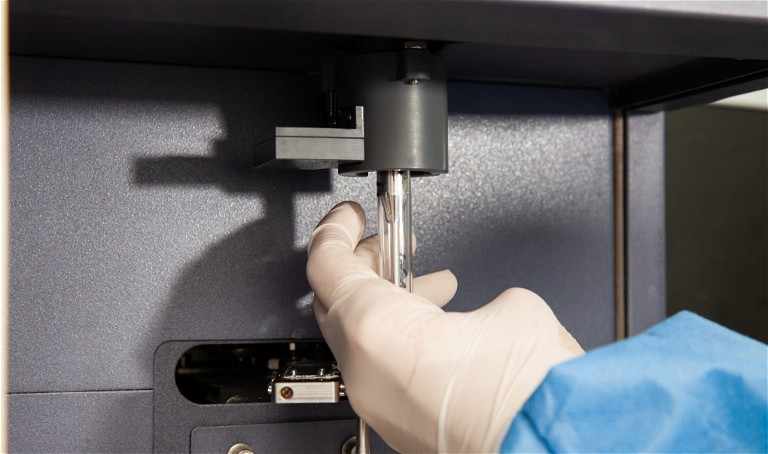Analytics: Flow Cytometry
Flow Cytometry: A Bioanalytical Platform for Cell and Gene Therapy
Flow cytometry is a powerful technology in the emerging cell and gene therapies (CGT) field and plays a significant role in various stages in the adoptive cell therapies, but what are its advantages and limitations?
By Kevin Lang, Adam Rupert, Spencer Hebert, Emily Bauer and Vellalore Kakkanaiah at PPD Clinical Research Business (Thermo Fisher Scientific)
Over the last couple of decades, the evolution of medicines from small molecules to proteins has led to the development of new cell and gene therapies (CGT) to treat a variety of diseases.1,2 Flow cytometry is a powerful technology in the emerging CGT field because it can be leveraged to evaluate advanced therapy medicinal products (ATMPs) during the good manufacturing practice (GMP) process, as well as monitor cellular kinetics after patient administration and examine pharmacodynamics (PD).3
Characterisation of ATMPs
Manufacturing cellular therapies, such as chimeric antigen receptors (CAR T and CAR NK-cells) is required for the evaluation of quality and purity of the drug product.
Critical quality attributes (CQA) that are evaluated include transduction efficiency, viability, purity and phenotype.3,4 Multiparametric flow cytometry allows characterisation of the previously mentioned CQAs.3,4 Other technologies are available, but flow cytometry allows for efficient functional characterisation, while also providing insights into potency.5 This assessment includes proliferation, degranulation, phagocytic capacity, antigen presentation and cytokine release capabilities. The association between the composition, viability and cellular phenotype of ATMPs is an area of active investigation.6 The US Food and Drug Administration (FDA) recently published draft guidance for the development of CAR T-cell products.7
Monitoring Cellular Kinetics
Cellular therapeutics are ‘living drugs’ that defy traditional drug kinetics with the potential to proliferate in vivo upon drug infusion.5,8-10 After infusion, the cellular kinetics can be monitored using multiparametric flow cytometry to help determine safety and efficacy in clinical trials.8-10 Enumeration of the drug product can be monitored over time in various matrices such as peripheral blood, bone marrow or cerebral spinal fluid. The ATMP modifications can be easily identified using specific antibodies deployed with standard flow cytometry immunophenotyping panels. These panels support CGT trials by identifying CAR T-cells, genetically engineered red blood cells, CAR natural killer cells (CAR-NK’s) adrenoleukodystrophy (ALDP) monocytes and Sipuleucel-T (a dendritic cell vaccine targeting prostate cancer).11-14
These measurements are extremely important and allow correlation to clinical responses. Mueller et al found that peak CAR T persistence and expansion correlated with clinical responses to CAR T therapy in patients with acute lymphoblastic leukaemia and chronic lymphocytic leukaemia.9 Flow cytometry provides several advantages in CGT clinical trials, most importantly the visualisation of the populations of interest. Additionally, this allows for consistent long-term monitoring, flexible parameter design and highly specific and sensitive assays.
'...multiparametric flow cytometry can identify certain tumours and provide substantial evidence of treatment efficacy'

Evaluation of Pharmacodynamics
Cellular kinetics are of the utmost importance to CGT clinical trials. However, PD assays deliver a multitude of information about both the ATMPs and the impact of this modality on various cells. The list of multiparametric flow cytometry PD assays is too exhaustive to list here, but some of the most important and highly utilised are described below.15 In addition to major immune cells, such as T-cells, B-cells, NK-cells, dendritic cells and monocytes, generally identified in flow cytometry assays, other less frequent populations can generate interest based on CGTs’ impact. These include memory T-cell populations, eg, central and effector memory T-cells.6 This can be important when phenotyping CAR T-cells, which generally exhibit more significant central memory T-cell proportions. T regulatory cells are another smaller population, constituting approximately 5-15% of CD4+ T-helper cells, which exhibit broad immune regulation and tolerance induction. These regulatory T-cells are essential in several CGT studies, especially those targeting autoimmune diseases.16
Immune cell populations exhibit marked changes upon encounter with inflammatory antigens and their phenotype transitions to an activation state. Multiparametric flow cytometry PD assays allow assessment of the activation status of immune cells or of the ATMPs, using markers such as HLA-DR, CD69, TIM-3, 4-1BB, NK activation markers NKG2A and NKG2D, ICOS, PD-1L and especially PD-116. One of the more complicated aspects of cellular therapies is their ability to proliferate or not, which can have a massive impact on the efficacy of the treatment.17Therefore, evaluating the proliferative capacity of ATMPs by identifying the nuclear antigen Ki-67, or the terminally differentiated ‘senescent’ marker CD57, can be critical for the trial. Finally, multiparametric flow cytometry can identify certain tumours and provide substantial evidence of treatment efficacy.17
Advantages of Flow Cytometry
Multiparametric flow cytometry possesses many advantages over other technologies involved in CGT.5,15 Flow cytometry provides unparalleled visualisation of populations of interest. ATMPs can be identified through reporter markers not normally expressed on that population of cells such as CAR T-cells expressing a B-cell marker CD19+. Flow cytometry allows for easy visualisation of the ATMP itself and the type of immune population that the ATMP resides in using scatter properties and enumeration markers.10 This is a very compelling piece of scientific evidence and is one of the primary reasons for the increase in the utilisation of multiparametric flow cytometry in CGT clinical trials.
The significant population density increases in some CGTs make the modality impact readily apparent. With correct instrumentation maintenance and calibration, flow cytometry provides consistent monitoring over long periods of time. Even over years, comparing the functional characterisation of CGT treatment is relatively easy with multiparametric flow cytometry.18 These assays are consistent and robust over long periods. Flow cytometry assays also investigate site-specific targets of impact in multiple samples and tissues. Examples include peripheral blood, bone marrow and cerebral spinal fluid. Evaluating tumour load in the peripheral blood versus the bone marrow or differentiating infiltrating CAR T-cells in the bone marrow, cerebral spinal fluid and peripheral blood is highly efficient. Additionally, flow cytometry assays are very flexible to build, with markers specific for the CGT, populations of disease interest and mechanisms of action. With the introduction of novel spectral cytometers, higher dimensionality cytometry has become a reality. Spectral cytometers will vastly increase the number of markers that can be evaluated in one panel, thus reducing the reagents needed, and, more importantly, the sample required for analysis. In the world of clinical trials, where every sample and milliliter of blood is vital, having the capability to investigate a myriad of phenotypic characteristics in a single panel is an advantage few technologies have.
Multiparametric flow cytometry assays are highly specific for the phenotypic characterisation of CGTs. While molecular and other modalities are known for high sensitivity, flow cytometry assays are the same as these modalities, if not more sensitive in some cases.15 For example, based on previous unpublished experience, a cellular kinetics enumeration assay had sensitivity down to one cell per microliter of peripheral blood for the CGT.
Limitations of Flow Cytometry
Multiple obstacles must be addressed for multiparametric flow cytometry assays to be implemented, primarily the stability constraints of whole blood and bone marrow samples.19 Significant investigation must go into designing panels that are equivalent between whole blood, frozen peripheral blood mononuclear cells (PBMCs) or frozen lysed blood. While stability is one of the major obstacles an investigator must overcome, others include panel design, identification of appropriate controls, instrument set-up/compensation, expertise required for accurate analysis and be able to account for the differences seen between clinical samples and the normal donors used in development.20 Importantly, multiparametric flow cytometry runs in parallel with molecular technologies such as qPCR. Although qPCR assays are simpler to use and more amenable to global deployment, multiparametric flow cytometry approaches offer the benefit of concurrently identifying CGTs and understanding the phenotype and function (proliferating, activated or suppressive) of cellular populations.8,9 Flow cytometry directly measures CAR expressing T-cells, differing from qPCR, which measures the integration of the transgene into the T-cell genome. It doesn’t measure expression of the inserted CAR.8,9
Conclusion
Flow cytometry-based assays are a viable option for cellular therapies, and in some cases can be the superior technology for accessing CGT study parameters. Evaluating GMP products (characterisation, purity and quality) is a critical step that is well-suited to flows used in the characterisation and evaluation for quality and purity of CGT products produced through GMP.4 As mentioned previously, multiparametric flow cytometry and cellular kinetics of CGTs can be evaluated at multiple points throughout the course of patient treatment. This allows for analysis pre- and post-infusion, thus creating a complete ‘story’ for each patient enrolled. The importance of cellular kinetics to CGT trials can be seen in the fact that a significant increase in cell proliferation rate of CAR T-cells was observed in responders, and the patient response status was closely associated with CAR T-cellular kinetics.10 Concordant with cellular kinetics analysis, multiparametric flow cytometry can perform phenotypic characterisation of both the cellular therapy or associated cells. Usually, this includes leukocytes or tumour cells to measure the impact of the therapy. Multiparametric flow cytometry PK assays also correlate well with qPCR-based assays and have the added benefit of measuring functional CAR-T cell expression, therefore, better predicting therapeutic disease control.8,9 Collectively, multiparametric flow cytometry is an excellent technology for evaluating clinical trials of emerging CGTs.
'Flow cytometry allows for easy visualisation of the ATMP itself and the type of immune population that the ATMP resides in using scatter properties and enumeration markers'
References
- Rohaan M W et al (2019), ‘Adoptive cellular therapies: the current landscape’, Virchows Arch 474, 449-461
- Albinger N et al (2021), ‘Current status and perspective of CAR-T and CAR-NK cell therapy trials in Germany’, Gene Therapy 28, 513-527
- Mfarrej B et al (2021), ‘Validation of a flow cytometry-based method to quantify viable lymphocyte subtypes in fresh and cryopreserved hematopoietic cellular products’, Cytotherapy 23, 77-87
- Reddy OL et al (2020), ‘Improving CAR T cell therapy by optimizing critical quality attributes’, Seminars in Hematology 57, 33-38
- Lang KR et al (2021), ‘Flow cytometry and pharmacokinetics’, Bioanalysis 21, 1645-1651
- Golubovskaya V et al (2016), ‘Different Subsets of T Cells, Memory, Effector Functions, and CAR-T Immunotherapy’, Cancers 8(3), 36
- Visit: fda.gov/regulatory-information/search-fda-guidance-documents/considerations-development-chimeric-antigen-receptor-car-t-cell-products
- Sarikonda G et al (2021), ‘Monitoring CAR-T cell kinetics in clinical trials by multiparametric flow cytometry: benefits and challenges’, Cytometry 100, 72-78
- Mueller KT et al (2017), ‘Cellular kinetics of CTL019 in relapsed/refractory B-cell acute lymphoblastic leukemia and chronic lymphocytic leukemia’, Blood 130(21), 2317-232
- Liu C et al (2021), ‘Model-based cellular kinetic analysis of chimeric antigen receptor-t cells in humans’, Clin Pharmacol Ther, 109, 716-727
- Maude SL et al (2018), ‘Tisagenlecleucel in Children and Young Adults with B-Cell Lymphoblastic Leukemia’, NEngl J Med 378, 439-448
- Fraietta JA et al (2018), ‘Determinants of response and resistance to CD19 chimeric antigen receptor (CAR) T cell therapy of chronic lymphocytic leukemia,’ Nature Medicine 24, 563-571
- Cohen AD et al (2019), ‘B cell maturation antigen-specific CAR T cells are clinically active in multiple myeloma,’ J Clin Invest 129, 2210-2221
- Kantoff, PW et al (2010), ‘Sipuleucel-T immunotherapy for castration-resistant prostate cancer’, N Engl J Med 363, 411-422
- Litwin V et al (2011), ‘Flow cytometry in drug discovery and development’, John Wiley & Sons, Inc., Hoboken, NJ USA
- Jones EA et al (2006), ‘Optimization of a flow cytometry-based protocol for detection and phenotypic characterization of multipotent mesenchymal stromal cells from human bone marrow, Cytometry B’, Clinical Cytometry 70(6), 391-399
- Maryamchik E et al (2020), ‘New directions in chimeric antigen receptor T cell [CAR-T] therapy and related flow cytometry’, Cytometry B Clin Cytom 98, 299-327
- CLSI, ‘Validation of assays performed by flow cytometry’, 1st ed In CLSI document H62. Wayne: PA. Clinical and Laboratory Standards Institute 2021
- Kakkanaiah VN et al (2019), ‘Evaluation of sample stability for cellular kinetics and pharmacodynamic flow cytometry methods’, Bioanalysis 11, 1881-1184
- Kakkanaiah VN et al (2018), ‘Flow cytometry in cell-based pharmacokinetics or cellular kinetics in adoptive cell therapy’, Bioanalysis 10, 1457-1459

Emily Bauer MEd, serves as a group leader in the flow cytometry laboratory within the PPD Clinical Research business of Thermo Fisher Scientific. She has over ten years of experience in this role in which she coordinates production sample analysis and oversees daily laboratory operations.

Kevin Lang PhD, is an immunologist who serves as a senior research scientist for the flow cytometry department within the PPD clinical research business of Thermo Fisher Scientific. In this role, he provides scientific expertise with a focus on multiparametric flow cytometry development, validation and production clinical studies. He joined the business in 2016 with training in immunology, cancer immunotherapy and flow cytometry.

Adam Rupert serves as a research scientist in the flow cytometry laboratory within the PPD clinical research business of Thermo Fisher Scientific. In this role, he has over ten years’ experience in developing and validating multicolour flow cytometry assays.

Vellalore Kakkanaiah PhD, serves as director of the flow cytometry laboratory within the PPD clinical research business of Thermo Fisher Scientific. His laboratory is focused on the development of flow cytometry methods to support drug development.

Spencer Hebert is an associate research scientist in the flow cytometry laboratory within the PPD clinical research business of Thermo Fisher Scientific. He has more than nine years of experience in this role and focuses on the design and development of flow cytometry assays.